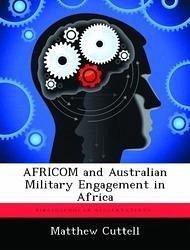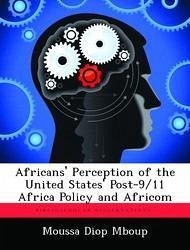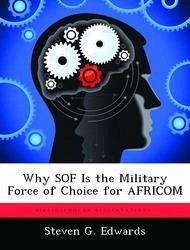Nicht lieferbar

Africom and Australian Military Engagement in Africa
Versandkostenfrei!
Nicht lieferbar
The Australian military has a proud history of engagement in Africa in support of Commonwealth and national interests as well as a history of peacekeeping in support of humanitarian assistance. With Australia's attention diverted to the Middle East there have been missed opportunities for military engagement within Africa. The announcement of the creation of a Geographic Component Command (GCC) for the continent of Africa (Africa Command, ARFICOM) demonstrates the increasing importance of Africa to the United States. The Global War on Terror, indigenous capacity building and the threat of fail...
The Australian military has a proud history of engagement in Africa in support of Commonwealth and national interests as well as a history of peacekeeping in support of humanitarian assistance. With Australia's attention diverted to the Middle East there have been missed opportunities for military engagement within Africa. The announcement of the creation of a Geographic Component Command (GCC) for the continent of Africa (Africa Command, ARFICOM) demonstrates the increasing importance of Africa to the United States. The Global War on Terror, indigenous capacity building and the threat of failed states are some of the reasons for this increased focus and attention. Australia increasingly recognizes the importance of a stable and secure Africa in the larger context of global stability and security. The Australian military may be able to use the creation of AFRICOM to improve military engagement with African nations. Australia and the United States, as coalition partners, could work together in Africa to achieve mutual interests as well as serving as a means of fostering greater civil and military cooperation between the two nations and the African nations. This work has been selected by scholars as being culturally important, and is part of the knowledge base of civilization as we know it. This work was reproduced from the original artifact, and remains as true to the original work as possible. Therefore, you will see the original copyright references, library stamps (as most of these works have been housed in our most important libraries around the world), and other notations in the work. This work is in the public domain in the United States of America, and possibly other nations. Within the United States, you may freely copy and distribute this work, as no entity (individual or corporate) has a copyright on the body of the work. As a reproduction of a historical artifact, this work may contain missing or blurred pages, poor pictures, errant marks, etc. Scholars believe, and we concur, that this work is important enough to be preserved, reproduced, and made generally available to the public. We appreciate your support of the preservation process, and thank you for being an important part of keeping this knowledge alive and relevant.









